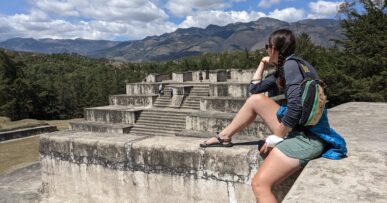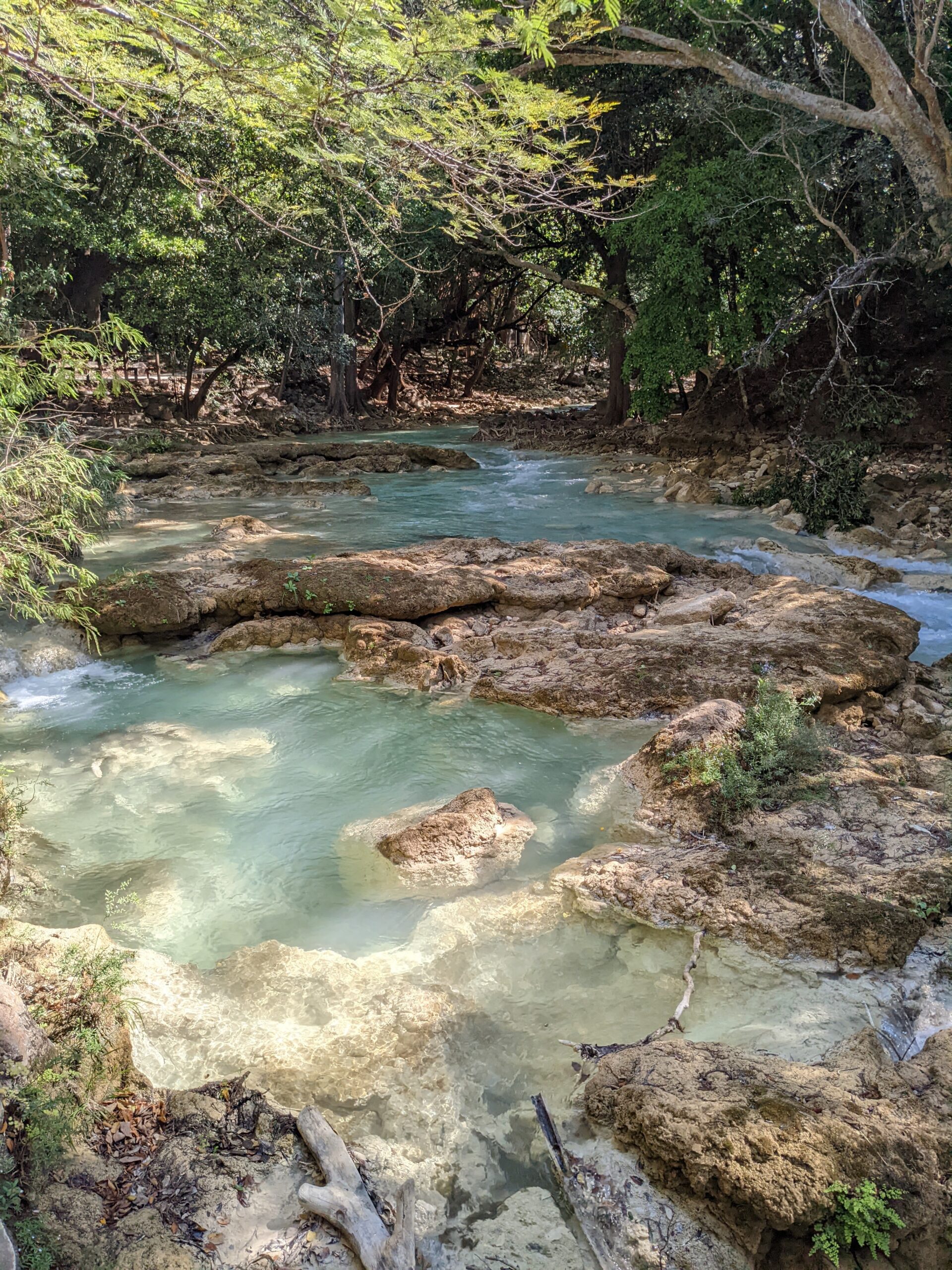We had tons of questions when we began preparing to bikepack the Baja Divide.
After so many years of traveling remote areas with relatively few information resources, we were overwhelmed by the quantity and angles of opinions about bikepacking in general. It felt like anything one person said, another person vehemently disagreed and we quickly got overwhelmed and ended up just sticking with the central resources. Later in the route we realized we wished we had read more posts from people who have actually ridden the route for concrete beta on kit and planning.
These are some of the questions we had, now answered from each of our perspectives. Hopefully they help you plan and pack for your next bikepacking adventure and if you have any unanswered questions, drop them in the comments below!
We have also compiled additional information to the Baja Divide Guide which would have helped in our decision making along the way.
1)What is your bike set-up?
Neon: Salsa Vaya Apex, Avid disc brakes, mostly SRAM parts (derailleurs, shifters, cogs, brake levers), Surly Knard 700×41 tubeless tires, Brooks Cambium Saddle, Shimano SPD dual-sided pedals.
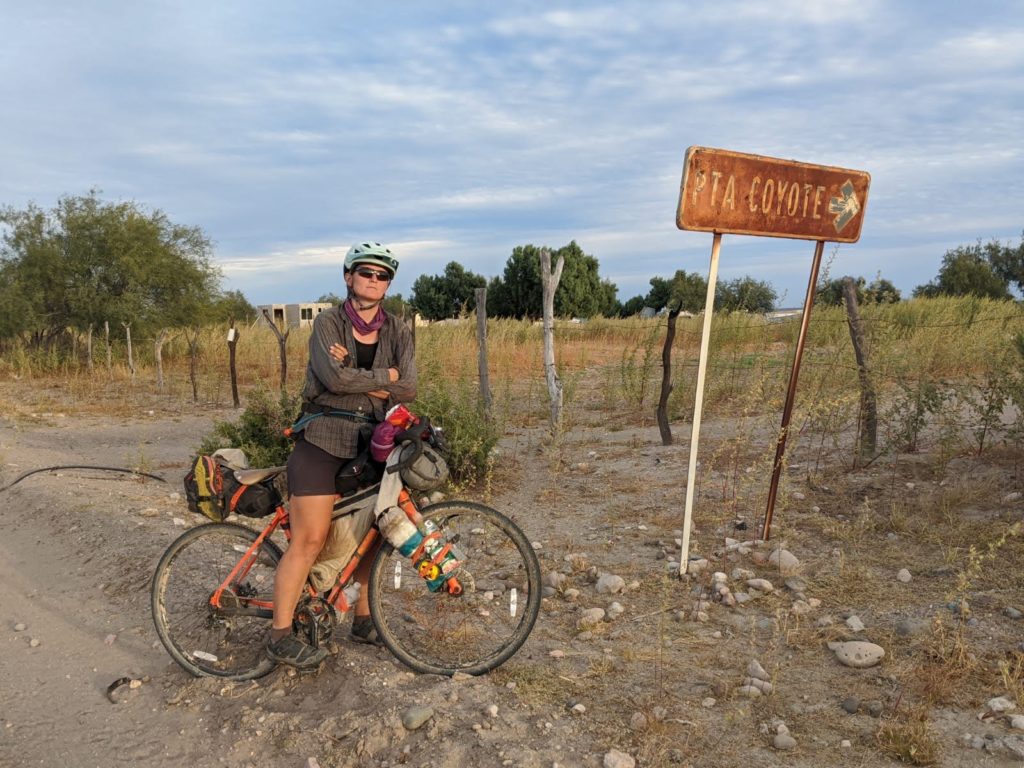
Fidgit: Soma Groove frame on 26×2.25 tires
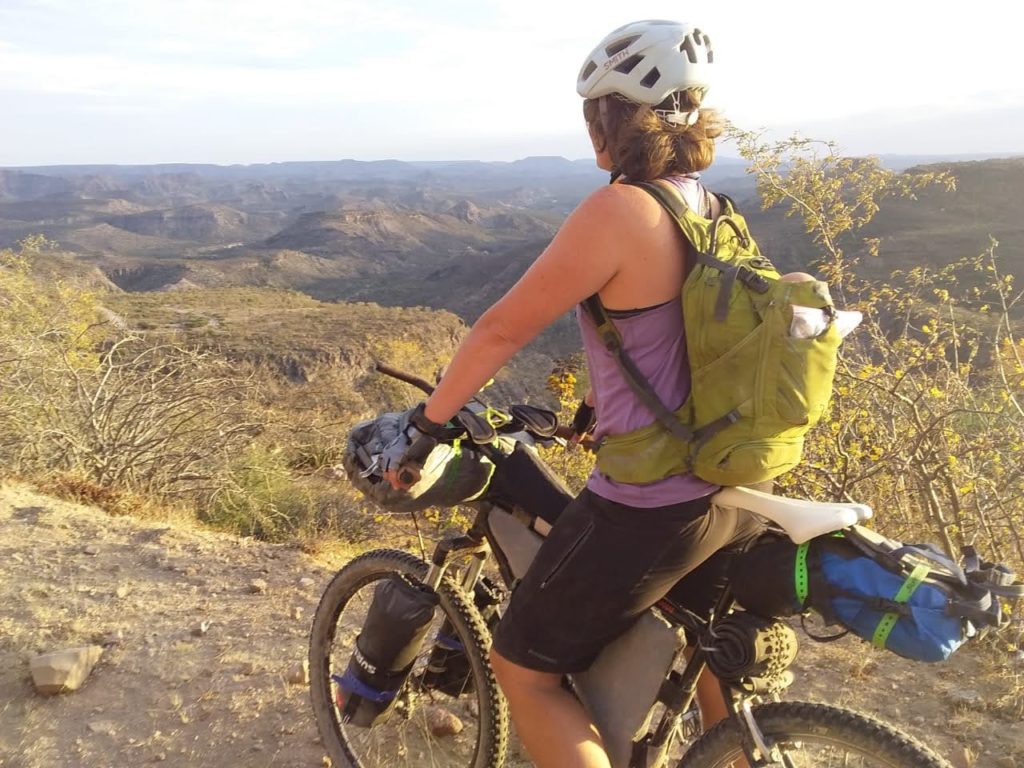
Birdie: Specialized Rockhopper frame on 26” x 2” wheels
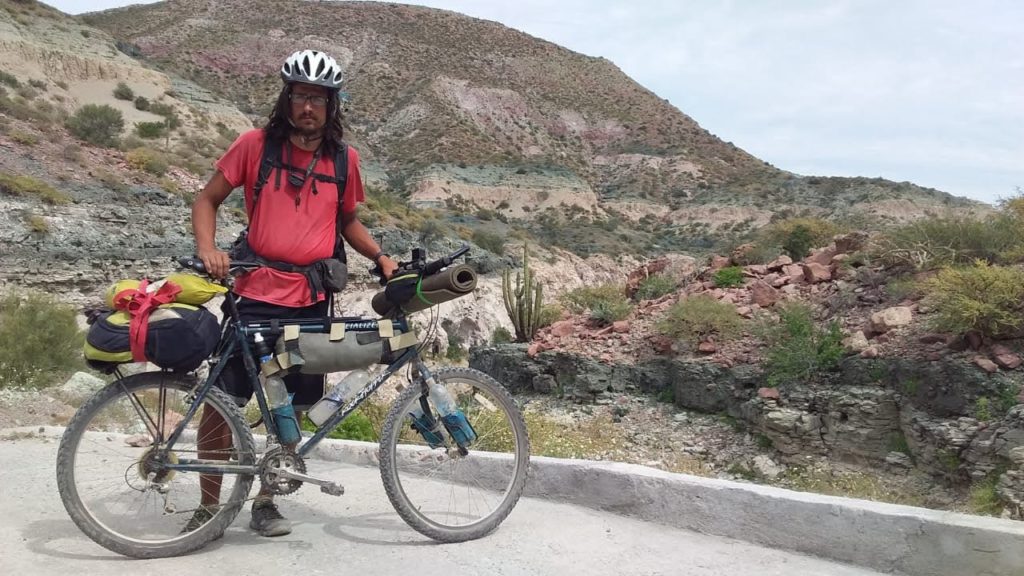
2) How long did it take/How far did you ride per day?
We rode as a team of 3 from January 3-Feb 26, 2020. We pedaled 1,927.5(ish) km/1,197.7 miles in 55 days with 13 days off along the way (including over a week off-route to visit friends) We rode between 20 and 120km/day, though the average was 40-70km per day. We took longer breaks throughout the day, sometimes including siesta to stay out of the heat.
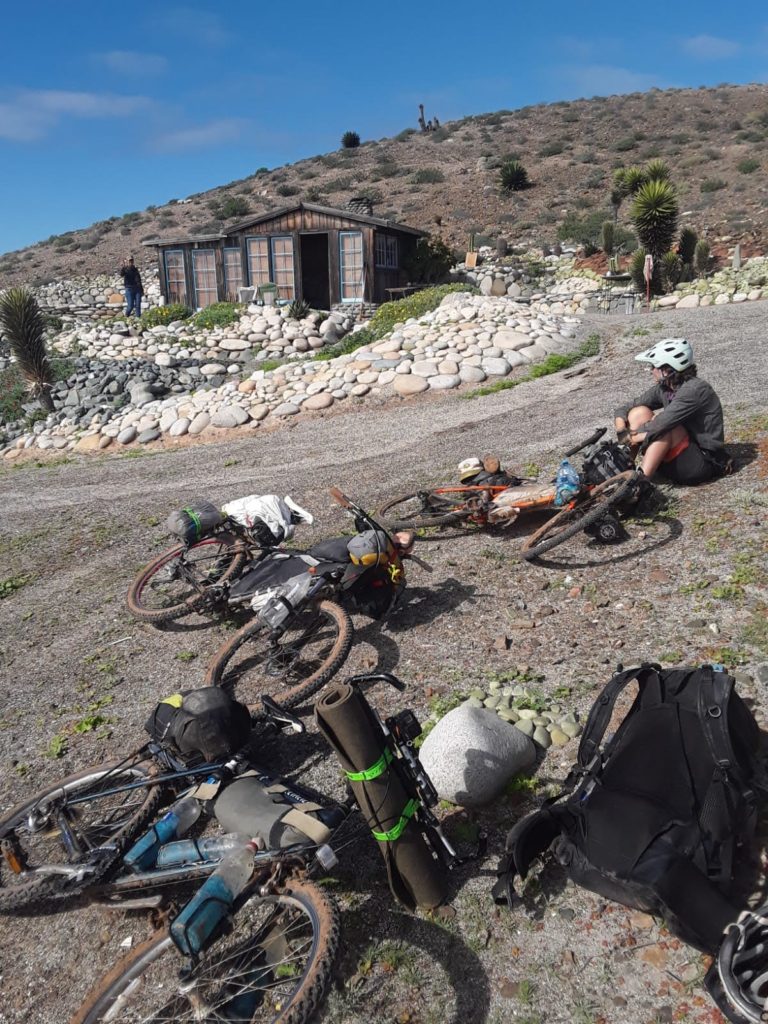
3) What is your experience level?/How much bikepacking have you done before?
Neon: Experience level on a bike- I would say Medium. I volunteered at a non-profit and built my own touring bike when I lived in Colorado in 2010. I got into mountain biking when I moved to Utah in 2011, though I didn’t pursue it consistently until 2014 when I bought my first full-suspension bike.
As for Bikepacking, I did a couple overnight bike trips before I set out southbound on the Wild West Route in summer/fall of 2019. After riding most of the WWR, I took a couple months off to change some gear and make my way to San Diego to begin the Baja Divide Route.
Fidgit: Not much long term travel on bike. A 3 day cycling tour in Colorado and moderate mountain biking experience over the years. Five days on the Camino del Diablo in Arizona just before starting this. Years of thru-hiking experience before that.
Birdie: This was my first bike-packing trip, but I have a lot of experience as a thru hiker. I also didn’t have much experience riding on rocky and sandy terrain before this trip. The longest bike ride that I had done prior to this was a 13 mile loop.
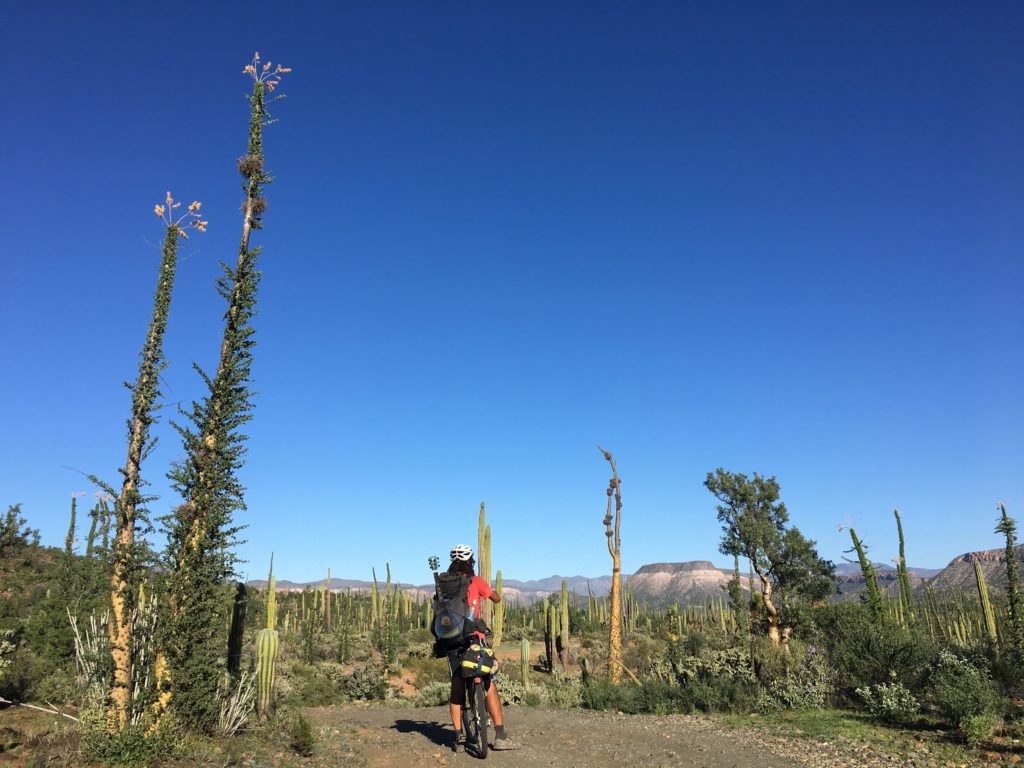
4) Is it safe?
Neon: In towns/with locals: Relatively. As with anywhere, be aware of your surroundings and don’t be the ‘obnoxious tourist’, and you’ll likely be fine. In the backcountry: Also, be aware of your surroundings, though it’s as safe as the desert environs of the US, I would say.
Fidgit: I found the Baja to be safe overall. Was comfortable wandering around the towns and cities, though minimized after dark walking as a general practice. Riding the roads there is not usually much shoulder but cars were generally respectful with only a few exceptions. Extended adventures always involve safety considerations such as carrying enough food, water, proper clothing, shelter, first aid, and we always carry a Garmin InReach.
Birdie: I felt pretty safe for the most part. I felt the most at risk near the border in Tecate, but this may have been a placebo effect from having heard sketchy things about it. No one ever threatened to harm me in any way.
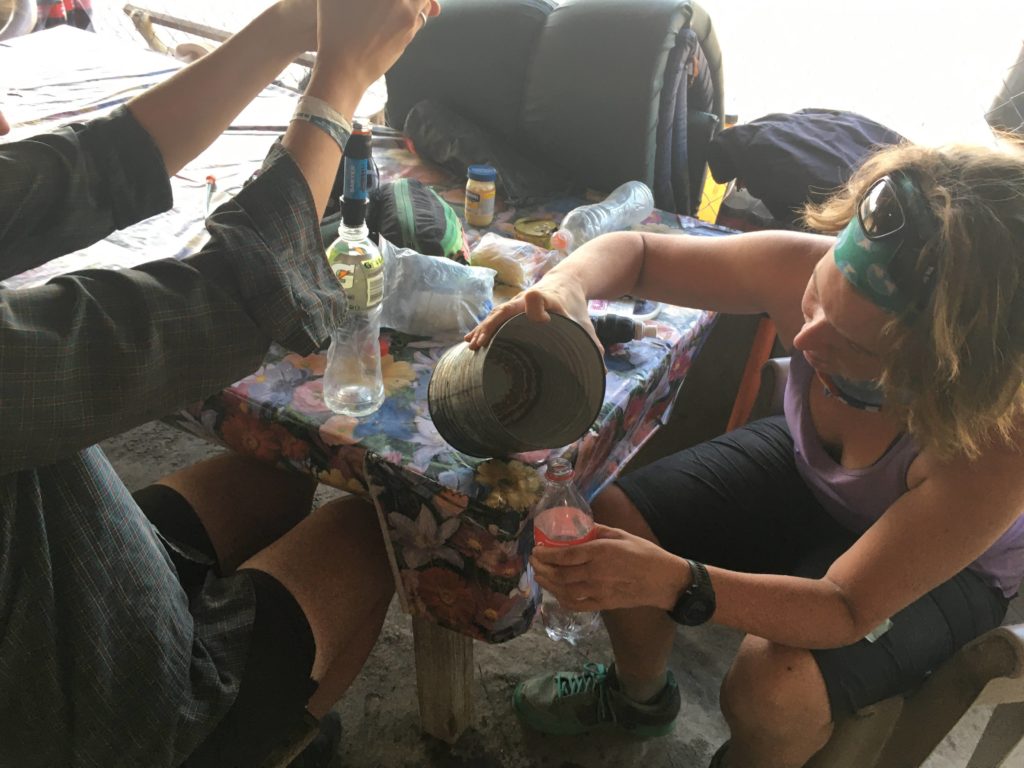
5) What are resupplies like? Did you cook on trail?
Neon: Bigger towns= bigger shops. There is usually a place in every town to get at least snacks, though don’t count on smaller towns to have everything you’d find in a town along Highway 1. Most moderately-sized shops will have rice, pasta, tuna cans, some sort of sauce (I prefer tomato for my pasta dinners), cookies, and chips, at least.
Yes, I cooked on-trail. Hot water for coffee in the morning and dinner at night.
Fidgit: Resupplies were pretty easy if you are fine with basic fare. Definitely carry cash and smaller bills for smaller stops as many do not accept card. You can get things like peanut butter every now and again and things like pasta, red sauce, tortillas, tuna, salsa, and even Ramen is everywhere. I carry an alcohol stove which I use for coffee in the morning and cooking dinner at night. Acetone and fingernail polish remover are readily available fuel sources, though alcohol at the pharmacies is never above 70% as per government regulation.
It would be easy enough to go without a stove if you are fine with bags of refried beans and tuna. Fresh fruit and veggies (oranges, avocado, onions, etc) are also frequent and cheap.
Birdie: Here are the meals I ate on most stretches of this trail. I was able to find these items at most resupplies, but towns marked with f – limited usually only stocked soda, cookies, and chips.
Breakfast: Bimbo Nut Bread
Snacks: Pouches of cookies
Lunch: Tuna, Tortilla, bag of beans
Dinner: Ramen or noodles with cheese
Yes, I cooked on an MSR pocket rocket almost all the way through the trail. Towards the end my isobutane canister finally ran out. It lasted me about a month and a half. I didn’t see any fuel canisters being sold along the route, but perhaps they could be found in a larger city like La Paz.
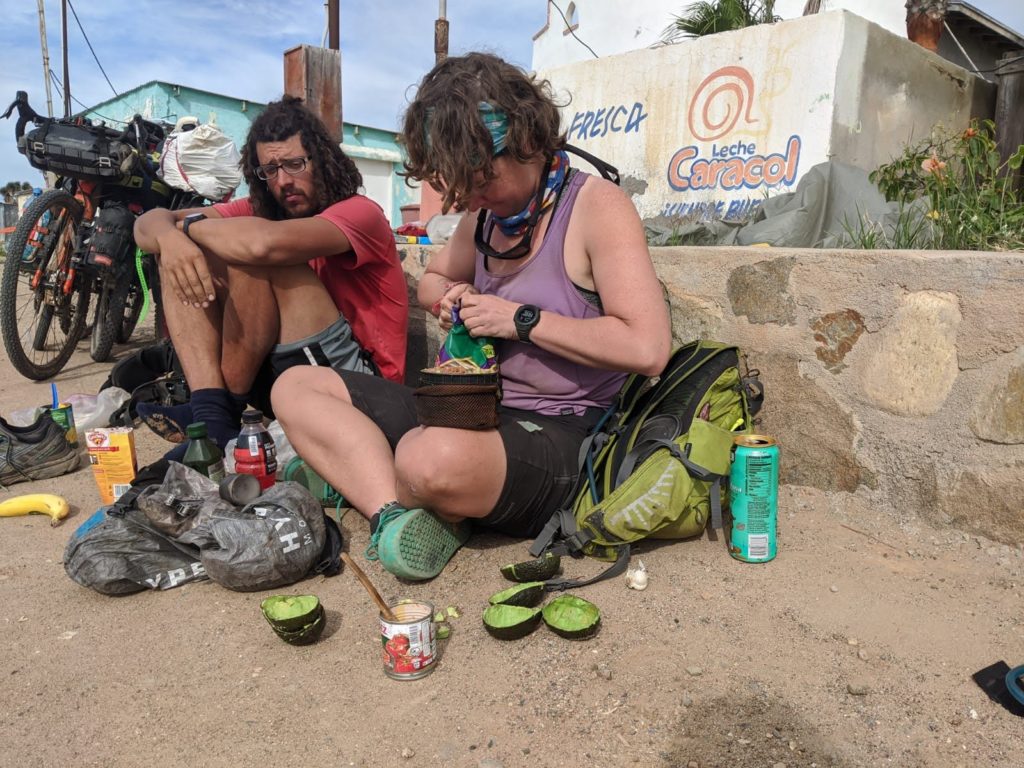
6) Cash or Credit?
Neon: I carry both, and make sure to have enough cash for going through the areas without credit card as a payment option. Often, you’ll get charged more if you pay with a CC as well. Smaller bills/change is more useful in smaller towns.
Fidgit: Cash for all small towns, credit in the cities. At small shops, if they do accept credit, you are likely to be charged an extra service fee.
Birdie: I mostly used cash that I obtained ATMs along the way. There were a few times that I used credit card in bigger towns, but I would always ask to make sure there wasn’t an extra charge to do so.
7) What is the terrain like?
Neon: Varied. There are areas of sand, rocks, smooth route, washboards, washed out ditches, pavement, roller coaster-y terrain (up, down, up, down, etc), dusty, clay, and sometimes all of it in 20km or less!
Fidgit: It was much more varied and rocky than I had expected. A lot of exposure as well as coastal riding. The terrain was also generally much more rolling than the guide or profiles might lead you to anticipate.
Birdie: The road conditions were often rocky, sandy, or washboarded. Many sections were a roller coaster ride, with countless ups and downs. When it rained, the sections of road that were clay became nearly impassable.
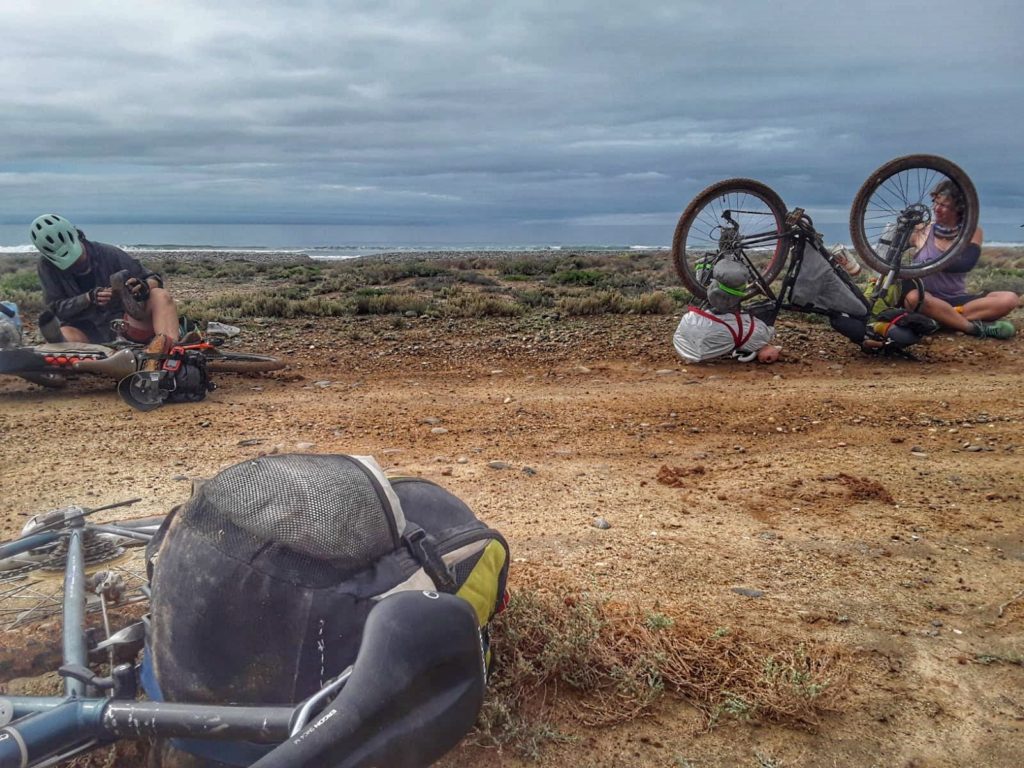
8) What surprised you about the Baja Divide?
Neon: It was much wetter than I had anticipated. We did do it in a wet year, but even the dense fog that would roll on at night along the Pacific coast and morning dew was unexpected. There was also much more flowing water than I anticipated, as none of it is marked as potential water sources(even though the locals have told us it’s there year-round)
Fidgit: The amount of life and variety in the desert, the quantity of US & Canadian travelers and surfers along the route. How hard it was.
Birdie:The density of plants and the amount of moisture in the air.
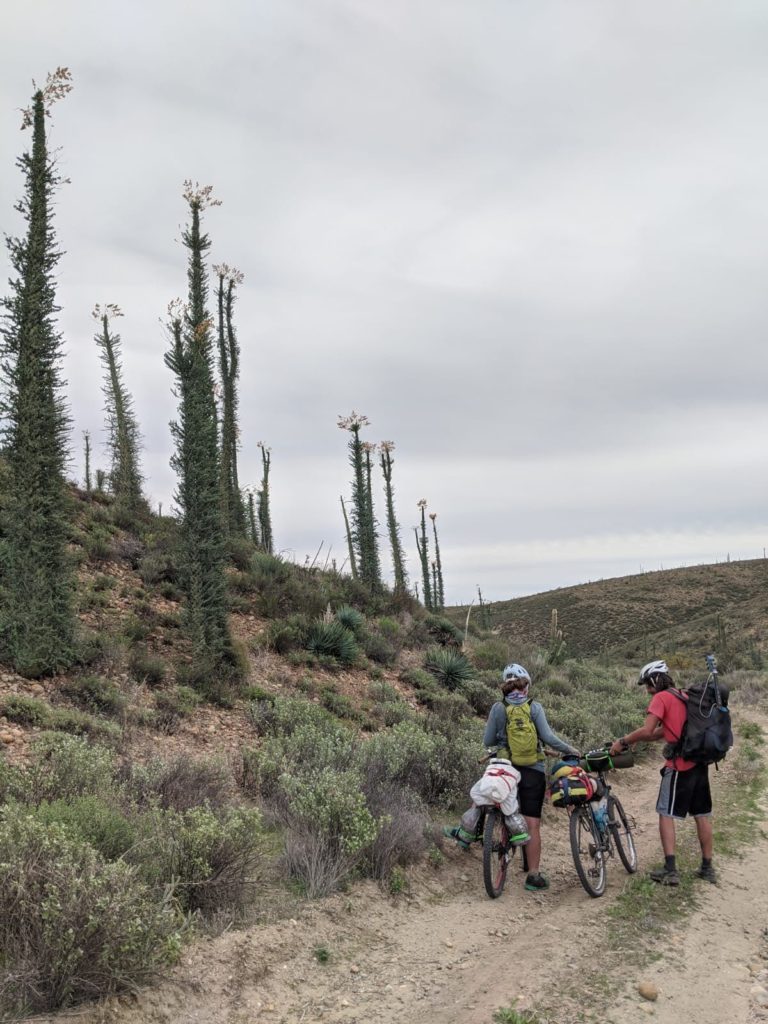
9) What kind of shoes do you wear?
Neon: Giro Terraduros for biking, an old pair of trail runners for around town, XeroShoes sandals for water/beach/heat
Fidgit: Giro Jacket MTB shoes for riding, Xero sandals for when I’m not on the bike.
Birdie: Asics.
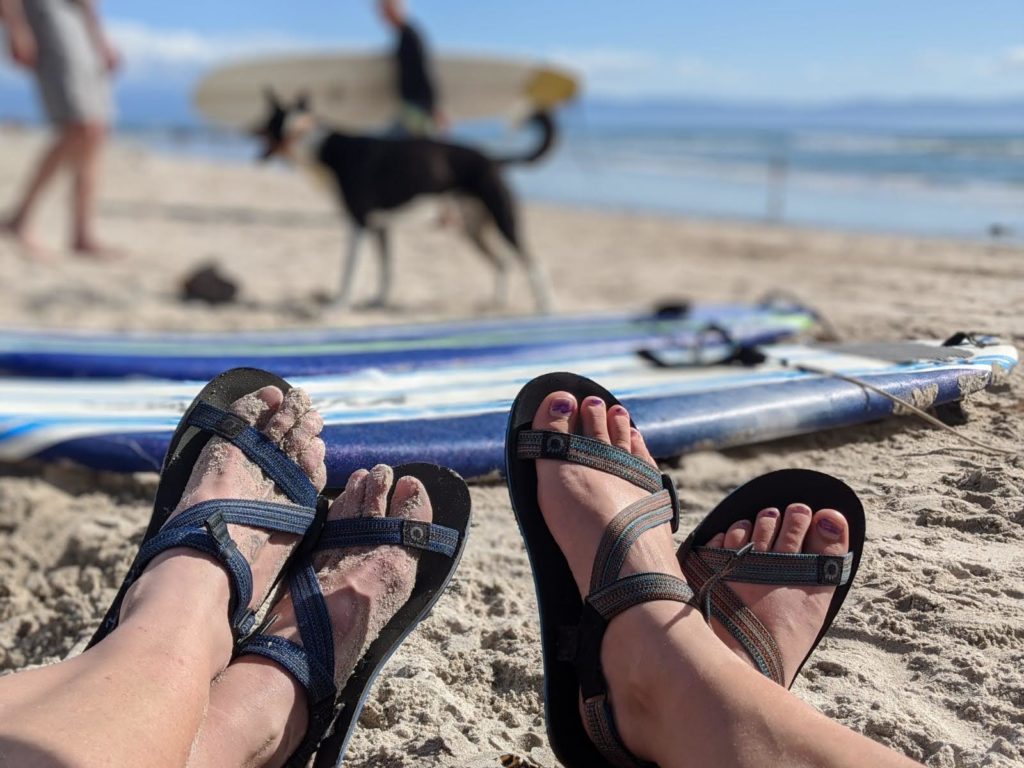
10) What would you have done differently?
Neon: I would have read more first-hand experiences to see the varied thoughts on the route
Fidgit: I would not have started with a rear rack and I would have gone with bigger tires
Birdie: If I had the money, I would have gotten 3-inch tubeless tires and proper bags for strapping all of my gear to the bike.
11) Do I really need to go tubeless? Do I really need 3 inch tires?
Neon: Tubeless- I highly recommend. The amount of spines in the desert is very high. In my over 3,000 miles of riding tubeless I’ve gotten 2 flats, and one was when I tried having a tube in- less than 48 hours and it had a pinch flat.
Fidgit: No and no, though both would make things MUCH easier/faster. I had to fix 7 flats and relied heavily on Slime to contend with all the thorn holes.
Birdie: If you can afford it I would highly recommend both tubeless and 3-inch tires. That being said, I have no personal experience with either of these, but most other bikers were equipped with these and seemed to be covering a lot more ground with less effort.
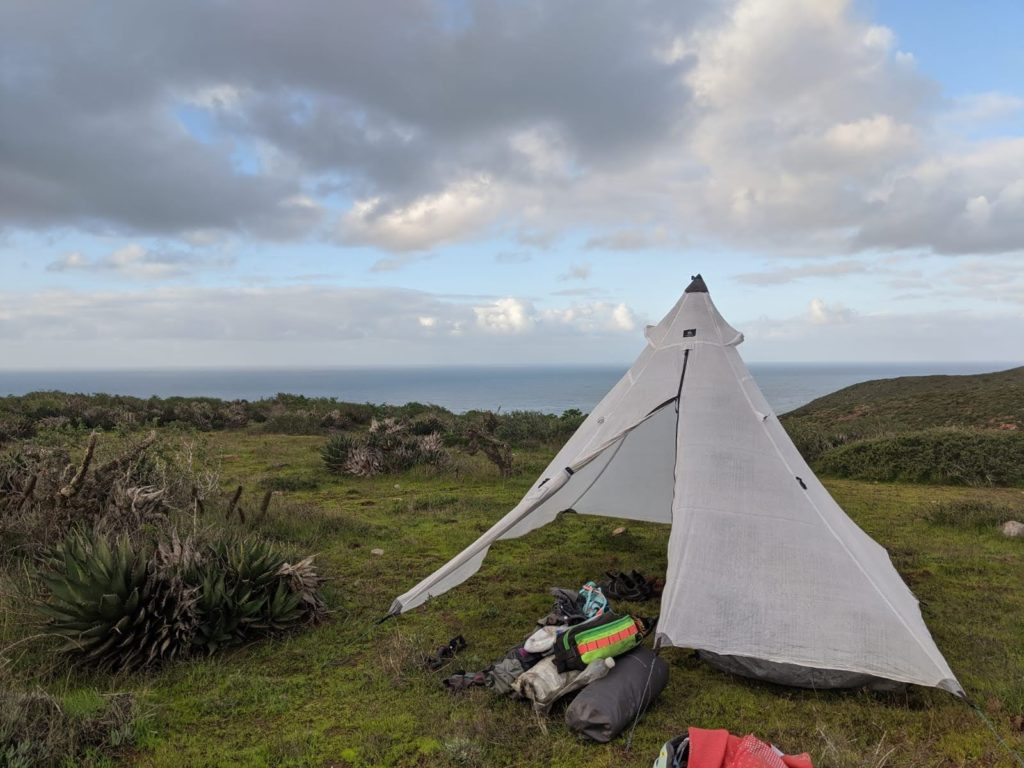
12) How do I change money?
Neon: I never changed any money, just got cash from the local ATMs
Fidgit: When we left the US the exchange rate was favorable to trade cash on the US side of the Tecate border. From there I used an international debit card to withdraw pesos from the Santander ATMs which did not charge a fee.
Birdie: I only exchanged US dollars for pesos right before we crossed into Mexico. While in Mexico, I withdrew cash from ATMs with a debit card so I did not need to convert any money.
13) What will the climate be like?
Neon: When we were there(Jan/Feb 2020), the climate was cool in the north, then warmed up south of San Ignacio, becoming hot south of Ciudad Constitucion. Sunny most days, with cool nights. We were very grateful for any cloud cover we got. Prepare to be damper than you think, especially at night along the Pacific.
Fidgit: Depends on when you go. We found the Pacific side of the range to be generally wetter than the Gulf of California side. Some frosty nights up north, one bout of good rain which turned the clay into a biker’s hell (according to a local ¼ in- wait 2 days, ½ in- wait 4 days. In Baja Sur temperatures warmed significantly and we slept with our bags unzipped with a few very hot days from noon-3:30 pm which made a siesta schedule desirable.
Birdie: It was a wet winter, so we often woke up with condensation soaked tents. Temperatures at night were in the low 40s in early January but became quite comfortable coming into February. Daytime temperatures were quite pleasant in January, but were beginning to get a bit hot starting mid-February.
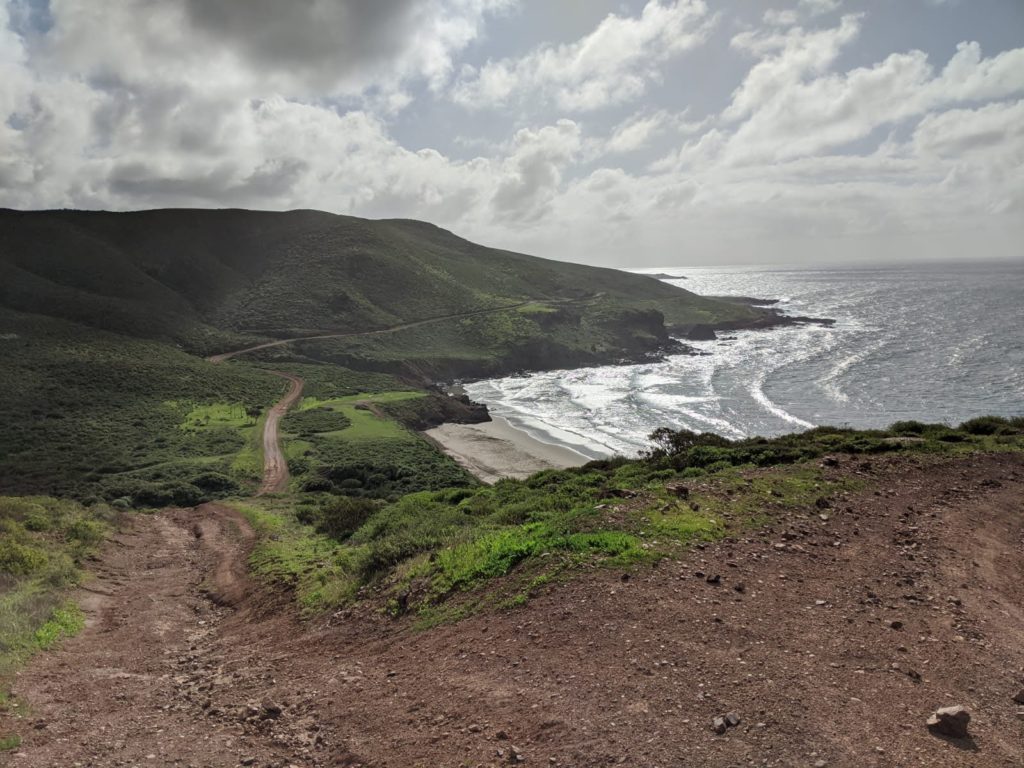
14) What do I need in my repair kit?
Neon: It depends, this is what I have in mine: A bike tool (I have a Blakckburn Wayside), a couple tubes, patch kit, wrench (pliers would also be useful), an extra chain, chain lube (I reapply once every couple of days to not gunk up the chain), 2 quick links, tire levers, zip ties (various sizes), extra Stans if you’re going to be tubeless, wire-bristle brush, rag, extra screws, extra cables (I have a brake and a shifter), extra brake pads, a couple pieces of old tubing. Duct Tape and Super glue can also be helpful.
Fidgit: Chain lube (applied 1-2 times a day), Slime, several quick links, zip ties, Duct tape, tool, patch kits, Fiber Fix.
Birdie: Spare chain links, quick link, 2 spare tubes (if riding with tubes), sealant, multitool, rag, zip ties, patch kit, 2 spare spokes, and a pump.
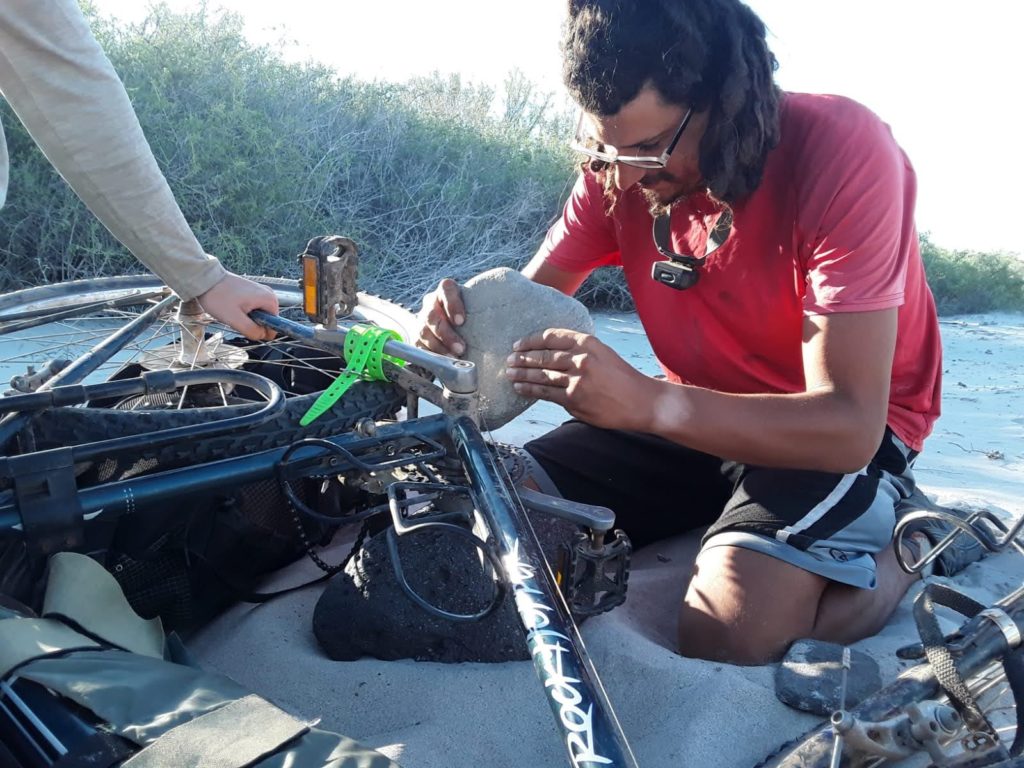
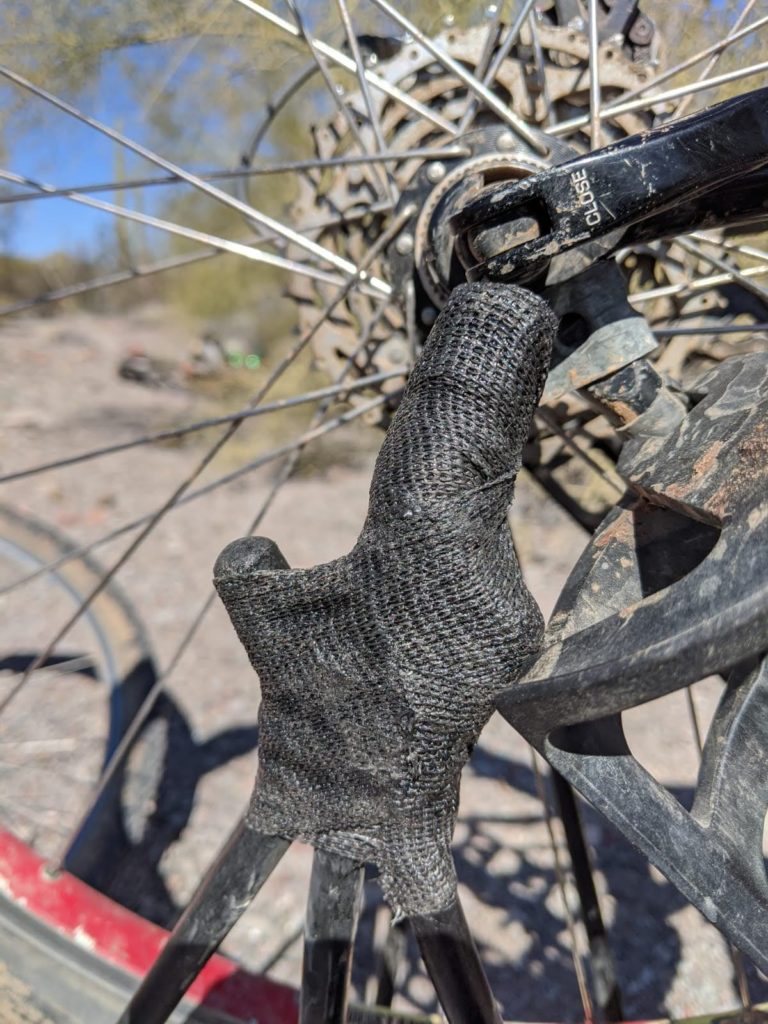
15)Would you do it again? Would you recommend it to others?
Neon: Parts of it I would be up for doing again. Not the sandy parts, but other parts. I would recommend it to a knowledgeable cyclist, though probably not someone who’s looking to find their first bikepacking trip.
Fidgit: I may come back and do the Cabo loop someday. The route was not as “vacationey/fun” as I had anticipated. It is more about the challenge of cycling and the natural environment. You will encounter some Mexican culture, unique tour opportunities, and plenty of cuisine (ie-tacos) if you are willing to branch out.
Birdie: Probably not. While I am grateful to have had the experience and have strengthened from the trials that it has presented, I would not invite the same experience again. I still prefer backpacking to bikepacking, so my opinion is a bit skewed. If someone was looking for a wild and rugged bikepacking route, then I would recommend this trail to them.
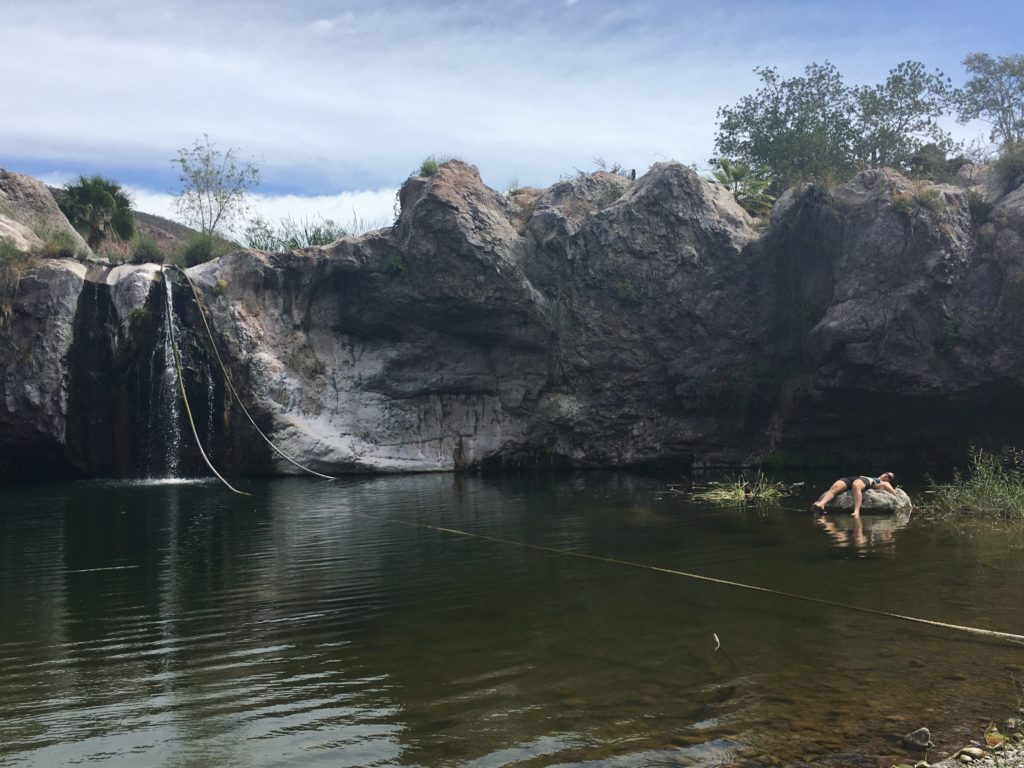
Find this information helpful or our content entertaining? Consider supporting the Her Odyssey journey.


